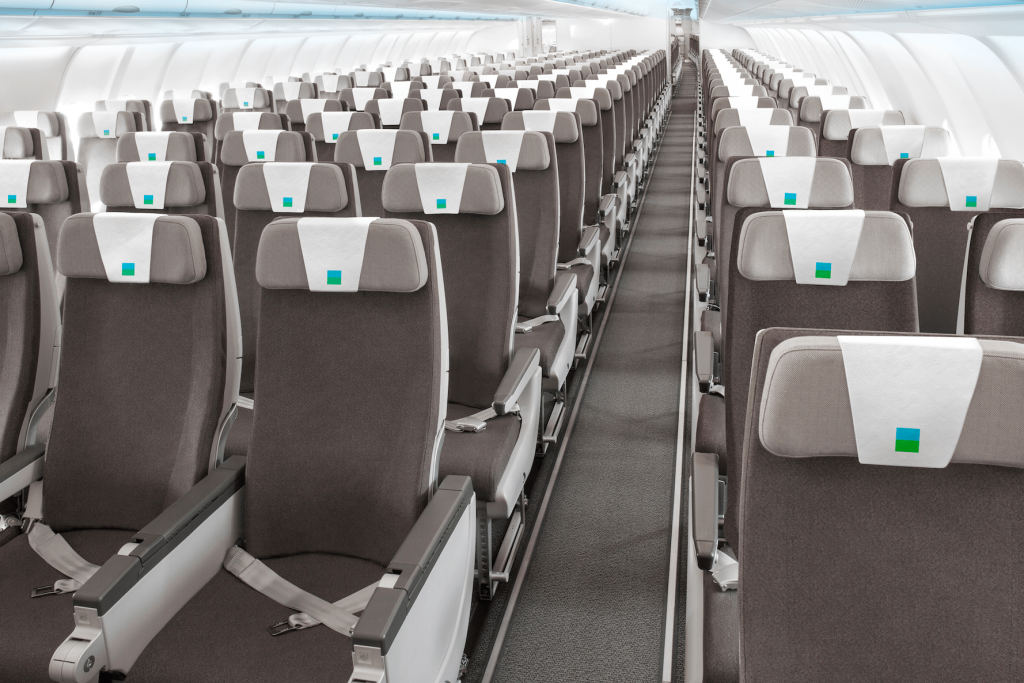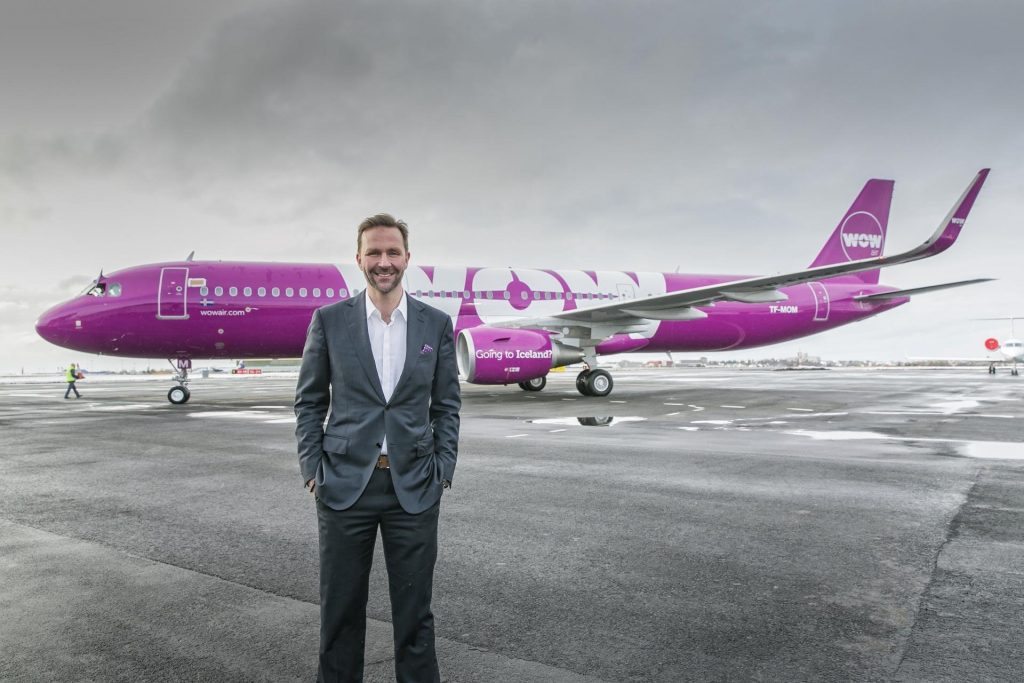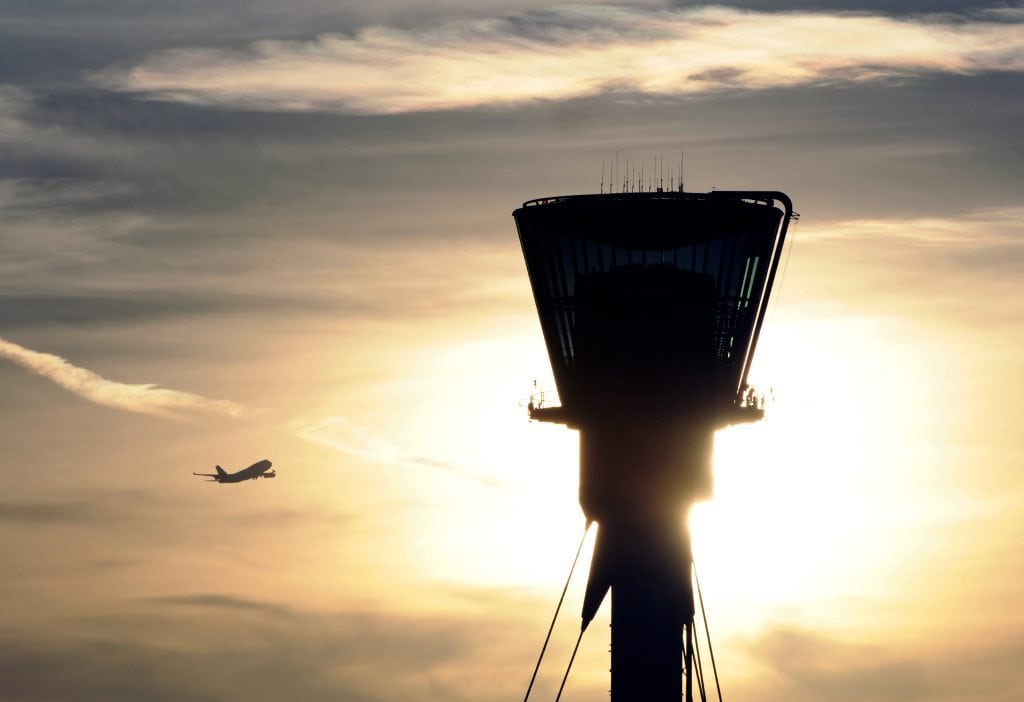Skift Take
For economic reasons, the transatlantic aviation market has been a hotbed of innovation since the first direct flight almost 100 years ago. Building on the foundations set before, the new disrupters believe we are on the verge of a huge change. Will it last?
One week before the UK Prime Minister triggered her country’s departure from the European Union, and less than two weeks before our inaugural Skift Forum Europe, we launched a series of four stories devoted to Resetting Transatlantic Travel.
Our second story analyses the changes in transatlantic aviation and the new role of low-cost, long-haul operators.
In 1913, British newspaper The Daily Mail came up with an idea that it hoped would advance development in the aviation industry. Under the leadership of Lord Northcliffe, the publication had already offered up a number of prizes in the field but its latest offer was set to be its most adventurous yet.
The sum of £10,000 (more than $1.3 million in today’s money) would be given to anyone who could cross the Atlantic “from any point in the United States, Canada, or Newfoundland to any point in Great Britain or Ireland in seventy-two continuous hours.”
The outbreak of the First World war meant that the competition was suspended for a number of years but in 1919 history was made. Setting off from St. John’s, Newfoundland, the team of John Alcock and Arthur Brown flew a modified heavy bomber aircraft 1,890 miles in 16 hours 27 minutes before landing near Clifden in Ireland.
Alcock and Brown were the first to achieve a feat that is now commonplace in the world of aviation. Every day thousands of jets cross the ocean that separates the Americas from Europe, Africa, and beyond. The forces of history, politics, and economics have meant that this stretch of water remains as central to modern day aviation as it was almost 100 years ago.
Developments throughout the 20th century have repeatedly put it at the center of the aviation world. In 1946 the U.S. and UK signed a bilateral air transport agreement, known as Bermuda I, that would became a model for deals other countries would make in the years that followed. The transatlantic market has been an incubator for such pioneering changes such as low-cost, long-haul travel as well as the not-so successful all business class airlines. It also hosted the only scheduled routes operated by the supersonic Concorde jets.
It remains a fiercely competitive arena. In the 1980s and 1990s British Airways fought a long-running campaign with Richard Branson’s insurgent Virgin Atlantic and there have been plenty of big failures. It’s fitting then that the latest aviation battleground is again taking place in Europe. A new generation of carriers is taking on the established order with a fresh twist on the low-cost, long-haul model. The rise of Norwegian, as well as the likes of Wow Air and WestJet, has forced the hand of the legacy carriers on both sides of the Atlantic into adapting their own business models to suit this new reality.
Opening Up
The modern day consumer aviation industry was forged in the aftermath of World War 2. In the proceeding years, the U.S. signed a number of deals with European countries but the biggest and most complicated was the agreement that needed to be negotiated with the UK.
The two sides met in the neutral territory of Bermuda to thrash things out. The U.S. delegation broadly wanted a liberal policy with fewer restrictions, while the UK, which had suffered more during the war, favored more restrictions. The eventual compromise agreement “become the model for the world’s bilateral air transport agreements for a period of some 30 years until Bermuda 2 replaced it in 1977.”
The British got their desire for some form of governmental tariff control, while the Americans secured the freedom for airlines to fix capacities and frequencies.
The reason this is important is because of the level of control and order it gave to international aviation. The agreement was eventually superseded by Bermuda II, which was signed in 1977. This stemmed from British disquiet over the perceived dominance of U.S. carriers Pan Am and Trans World Airlines (TWA) and in many ways was a step back from liberalism to a form of protectionism.
A full open skies agreement between the U.S. and the European Union came into force in 2008 and was followed a year later by a similar agreement with Canada.
“Between the EU and the United States, anyone can fly anywhere now, but before that, each country had its own bilateral agreement… Some of them were very liberal open skies type deals, but the UK, which is by far the largest market across the Atlantic… had quite a restrictive agreement called Bermuda II,” said aviation analyst Barry Humphreys.
“That limited the number of carriers who could fly into Heathrow, two airlines from each side. Others could fly into Gatwick and so forth, and there were all sorts of other restrictions, as well, so it was quite restrictive compared with an open skies arrangement.”
Restrictive it may have been, but it still offered up a gap in the market for someone to take advantage of.
The breakthrough
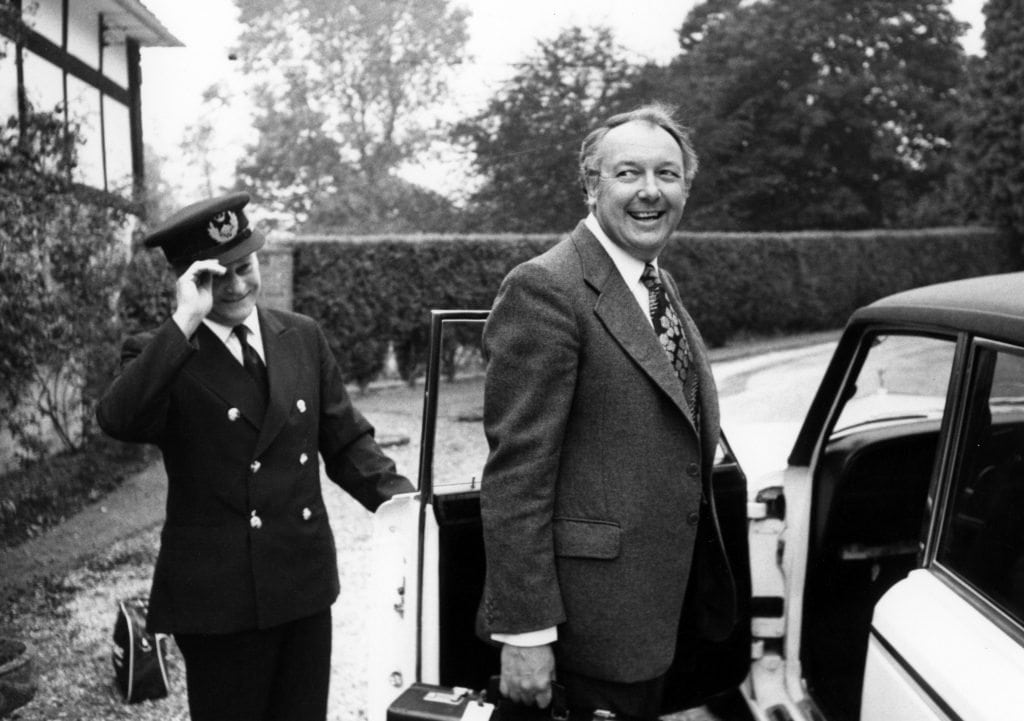
Freddie Laker had an idea that he thought could revolutionize the airline industry. He wanted to break apart the existing order by offering cheap transatlantic fares to cater for, in his words, the “forgotten man.”
Laker wasn’t strictly the first to come up with this idea — Icelandic airline Loftleiðir had been offering cheap fares between the U.S. and Europe via Reykjavik since the early 1950s — but he would operate directly between the two key cities of New York and London.
Skytrain was announced in 1971 with off-peak one-way fares touted at $42 (£32.50). That figure equates to around $594 (£462) in today’s money, which doesn’t sound like a bargain, but was about five times cheaper than the standard fare.
“If I may say so I think Skytrain is the best idea I have dreamt up for years. It’s got innovation stamped all over it, it’s deflationary, and it’s a British first. It’s a small but bold experiment,” Laker told a trade magazine in July 1972. The only problem was, he would have to wait another five years for his idea to get regulatory approval.
When Laker did get the go-ahead his intuition proved to be correct. In May 1978, eight months after the inaugural flight, Skytrain was operating with a load factor of 90 percent. Laker had said he needed to hit 60 percent to break even.
One of the ways that Laker managed to head off the established airlines was by only selling tickets on the day of the flight – something that caused a bit of a problem.
“People were showing up to the airports and actually queuing up and in some cases even camping because dad was flying at such high occupancy,” Laker’s son, also, called Freddie, told Skift.
The first-come, first-served approach was eventually modified after the UK Civil Aviation Authority relaxed its restrictions, meaning that Laker could sell a certain number of advanced bookings.
Skytrain’s expansion, which included routes to Los Angeles and Miami, showed that it could compete with the established carriers. This would come back to haunt it only a couple of years later.
There were a number of reasons behind Skytrain and Laker’s eventual demise. The recession in the early 1980s, the grounding of the MD DC-10 following a fatal crash as well as financial problems, were all contributing factors. As was the determination of rivals to seemingly destroy his business.
In response to Skytrain’s low fares a group of airlines decided to cut theirs. Pan Am reduced its North Atlantic fares by almost 60 percent with BA and TWA following suit. With Laker weakened, the final blow came from the fall in the value of the pound, leaving the company unable to service its debts. What followed was a bitter dispute between Laker and several rival airlines with Laker eventually settling out of court.
“It was at the same time as the oil crisis came about, so his costs were increasing, and his ability to compete was going away because people would rather spend the same price for what he was charging to go with the more up-market airlines, but it was scam to put him down basically,” said Laker Jr.
“He said that the day he shut down, that within seven days they raised their prices to double. Within another week, their prices had quadrupled back to the original rates. He was about one fourth of where they were at. That then put him in court for a number of years, eventually settling out of court with those airlines.
“It was a real David versus Goliath story. I think part of the reason why people of a certain age in England in particular have so much love for dad is because they kind of saw him as the guy that made it possible for them to travel. When he was fighting all those big airlines, that was about big, corporate money versus the little guy.”
Building alliances
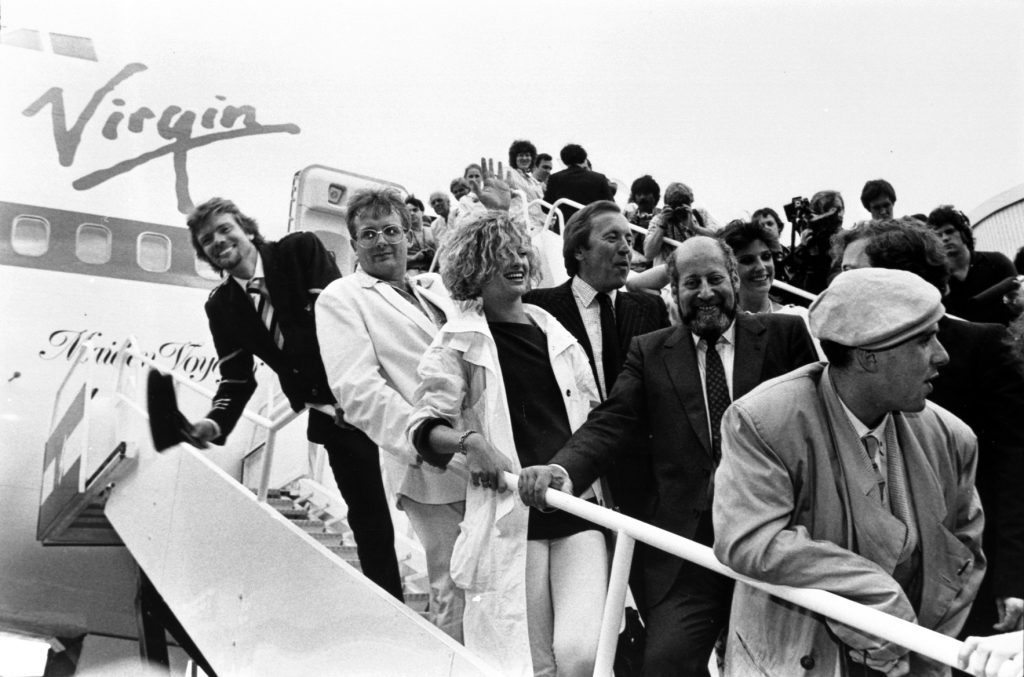
Skytrain may have been a short-lived success (although a smaller airline grew out of the collapse) but Freddie Laker’s legacy lived on.
He was partly the inspiration for Virgin Atlantic, with Branson even seeking out Laker for his advice on occasions. Branson, like Laker, positioned himself as the people’s champion and was happy to criticize the incumbents, especially BA, if it helped him gain an advantage.
In 1984 Virgin Atlantic entered a market that was still tightly regulated by today’s standards and dominated by three carriers: Pan Am and TWA from the U.S. and BA from the UK. He struggled to make the airline a success until the UK government allowed it to switch from London Gatwick airport to the more attractive Heathrow.
Branson’s headline-grabbing antics and his airline’s growth meant that BA started taking it seriously – a decision that led in part to the so-called “dirty tricks campaign.”
Although Virgin was much smaller, BA still felt a threat and by the mid-1990s the highly competitive nature of the transatlantic market, together with other economic forces necessitated a search for other options.
Other carriers had announced tie-ups before, including United Airlines and Lufthansa, but BA’s potential deal with nominal rival American Airlines made this one much more significant.
“BA tried to establish an alliance with American Airlines to get antitrust immunity so they could coordinate their services across the Atlantic, and Virgin led a campaign to stop that antitrust immunity being granted, both by the UK authorities and the Brussels authorities and the U.S. authorities,” said Humphreys.
“I actually led that campaign for many years. There were three attempts in total to get that antitrust immunity. Two of them failed, but the third one, which actually took place after I’d retired from Virgin. They succeeded in that so they do now have antitrust immunity, but again there was a lot of ill feeling at the time and [it was] a highly competitive environment.”
The 9/11 attacks had a wide-ranging impact on the aviation sector and the years that followed saw a huge amount of upheaval, particularly in the U.S. with mergers and acquisitions reducing the total number of carriers. Following Delta’s purchase of a significant stake in Virgin in 2013 and the merger of US Airways and American Airlines, FlightGlobal estimated that almost 80 percent of transatlantic capacity would be shared between essentially three groupings.
With such a level of consolidation it was only a matter of time before new models entered the market and over the last couple of years there have been a number of developments.
Northern lights
Norwegian Air Shuttle didn’t burst onto the scene out of nowhere. The airline has been around since the early 1990s but back then it was a shadow of its current self, flying regional services on behalf of another airline.
In 2007, under pressure from the dominant force in the market, SAS, Norwegian made a bold bet by ordering 42 Boeing 737s worth more than $3 billion. A bigger breakthrough came in 2013 with its first low-cost, long-haul routes to New York and Bangkok from Oslo and Stockholm. The carrier has since expanded to Gatwick utilizing the long-range capabilities of the Dreamliner aircraft and now offers flights to seven U.S. destinations. More will follow later this year when the narrowbody 737 Max comes into service. Norwegian plans to connect thinner routes between smaller cities, such as Edinburgh, Scotland and Providence, Rhode Island.
Chief Executive Bjørn Kjos has been nicknamed the “Freddie of the Fjords” and has always been happy to acknowledge his debt to someone he considered as a pioneer.
“We are simply holding the door open that Sir Freddie first unlocked to affordable long-haul fares that consumers worldwide now enjoy,” Kjos told Skift.
Norwegian, like other challengers before it, is still a relatively small force in a market still dominated by the big European and U.S. carriers. There are still plenty of skeptics who believe, like Laker before, that the model simply can’t work on bigger routes.
This time, though, Norwegian has plenty of advantages. The aircraft it uses are much more efficient than the gas guzzling DC-10s Laker flew and it has also benefited from being able to establish and grow its business in an era of relatively cheap fuel.
It hasn’t all been easy. Disputes with the U.S. government and workers have restricted its ambitions and its small fleet size meant that in the early days it could be susceptible to delays. The plan now is to do what Laker failed to do: Build up the business and make it sustainable over the long-term.
“It’s about scale – our route network is unique in that we operate more than 50 transatlantic routes from various cities in Europe to nearly 10 destinations in the U.S. using brand new 787 Dreamliners,” Kjos said.
“It has to be remembered that we’re the only low-cost airline offering direct transatlantic flights on a point-to-point network. We mainly compete with carriers operating a traditional hub and spoke model, which gears itself toward connecting feeder traffic onto long-haul flights. This results in in planes sitting on the ground longer, which is not ideal for a low-cost operation.”
Other models
There are other airlines, alongside Norwegian, offering up alternatives to the legacy carriers.
The north Atlantic island of Iceland has a long history as an aviation hotspot thanks to its geographically favorable position between Europe and North America. It was from here that the Loftleiðir operated the first low-cost, long-haul flights — famously used by Bill Clinton — and also where successor Wow Air is based.
“We like to think that we are the forefront of the long haul, low cost revolution if you like, which will transform the long distance travel in a similar fashion that it has already transformed the domestic or North America, Pan-Asia travel,” Wow Air founder and chief executive Skúli Mogensen told Skift.
“We believe the timing is now, partially because consumers have been educated by the domestic airlines, [and] very successfully so. They’re used to the underlying business model. Secondly, and very importantly, the Internet has really transformed and changed the game in terms of reachability. How you reach the consumer, how you market, how you service, how you upsell, etc. These are fundamental changes.”
Like its predecessor, Wow Air’s flights aren’t long-haul in the strictest sense as they require a stopover in Reykjavik, something that Mogensen doesn’t believe bothers consumers.
“They are looking for the cheapest way, the cheapest route. Also a lot of people are taking the opportunity to stop for a few days in Iceland, or just [to] stand up and stretch around a little bit. This market is very price driven.”
What is particularly interesting about Wow Air’s approach is that it doesn’t necessarily see itself primarily as an airline.
“I challenge my team all the time and ask them the question, are we an airline or are we an IT business?” Mogensen said.
That’s not as crazy as it sounds. The aircraft themselves are obviously the assets but the technology underpinning the operations, which in many cases is often ancient, is the key in today’s online age.
Michael O’Leary, the chief executive of Ryanair, has suggested that in the future, the fares themselves might actually be free. Airlines could make their money from deals with airports or through ancillary products.
“I think that the Internet has fundamentally changed a number of industries. I think the same holds true for the airline industry. There’s very little that I can add when it comes to flying between A and B. I think that’s become highly optimized and commoditized if you like. But it’s how you approach everything else, prior to your journey, how do you select your destination, how do you research your destination,” Mogensen said.
“Then of course, during your journey how you share everything on Instagram, Facebook, Snapchat etc. Then… how you manage everything post-travel. How you again share everything, how you become effectively the channel of more travelers because people view your pictures and see your experience, which might trigger them to go and explore as well. It’s just a completely… Again, the Internet has facilitated or enabled us to do things totally different. I think those who get that will succeed. Those who don’t will end up having a very hard time.”
Wow Air’s flights are flying close to full at 90 percent capacity, according to Mogensen, and there are plans to establish another hub outside of Europe, which would potentially open up new markets for the carrier.
Others, too, believe that there is still room for a mature airline market to grow. Tour operator Thomas Cook and its various in-house airlines have been offering charter flights to the U.S. for decades and wouldn’t necessarily be seen as innovators.
However, in recent years the company has moved many of its frequencies to scheduled services meaning that it is able to capture customers from outside its own company.
In the UK new routes have been added, particularly from the north of the country in Manchester and its chief airlines officer, Christoph Debus, senses an opportunity.
“Our origin is European and still the majority of our customers come from Europe flying to the U.S., but on many Condor [Thomas Cook’s German airline] routes we have already more than 50 percent point of sale U.S., so I think Americans [are] flying to Europe or beyond with some of our connecting flights.”
Unlike Norwegian and Wow, Thomas Cook has sought to extend its reach by signing deals with other airlines, including Volaris and JetBlue, so that passengers have the option of connecting to more destinations.
“I think over the last three years the growth to the U.S. has been 150 percent so I think we have more than doubled our capacity to the U.S., and where we see in a market which is still dominated by the big joint ventures there is a need for different offerings for maybe a better value for money proposition if you want to travel on a premium or business class for a very fair rate,” Debus said.
Copycat tactics
One of the things that Wow Air and Norwegian have in common is the prevalence of unbundled fares.
The practice has been common for years on low-cost, short-haul routes but up until recently long-haul was ordinarily divided up into the traditional different classes.
To lure in as many passengers as possible, this new generation of carriers offer eye-catching fares for only the most basic economy offering. These don’t always include a luggage allowance, food, or entertainment. Instead customers are given the option to add these themselves. Sometimes the flights are still cheaper than on legacy carriers, sometimes they are not.
Not only does this unbundling allow airlines to drum up attention through a new basic fare, it also means they have more opportunities to effectively upsell passengers. It is for this reason, one suspects, that companies like British Airways parent IAG are keen to get involved. Not just because they fear they are getting undercut but because they are missing out on a lucrative new revenue stream.
“Obviously [the legacy carriers are] trying to maintain market share with leisure passengers, who tend to be more price sensitive than business passengers. Whether that’s a direct reaction to long haul, low-cost carriers like Norwegian or other carriers, Gulf-based carriers like Emirates and Etihad is open to debate, but it is certainly an attempt to maintain market share and be more competitive,” said Frances Kremarik, a lecturer in air transportation at the University of Westminster.
However, Kremarik remains unsure whether this approach will work in the long term.
“It’s quite possible [that unbundling will continue to expand]. Having said that, most travelers who are on long haul routes do tend to have things like luggage. Unlike short-haul routes, where if you’re only flying for a day or perhaps a weekend, you can take a number of items with you as carry-on, it does become more of a challenge when you are going for longer flights. Normally, longer flights tends to mean perhaps a one week vacation as opposed to a weekend. It makes it more challenging. However, the option of unbundling fares certainly is something that some airlines may wish to pursue. How the traveling public will embrace that is another story.”
Kjos certainly believes it is the future: “Everybody has different requirements when flying whether choosing not to have a meal service or being happy travelling with just a cabin bag. Unbundled fares give consumers the lowest possible fares to choose from and more affordable opportunities to travel by paying for what suits their individual needs.”
IAG, and others, are clearly alarmed by Norwegian’s success. In an industry not known for its speed, IAG managed to announce and launch its own low-cost, long-haul unit within six months. Level will be based in Barcelona, where IAG’s airline Vueling has its base, and will initially offer flights to four destinations, including Los Angeles and Buenos Aires. Lufthansa’s subsidiary Eurowings is also adding flights to the U.S. from Germany this year.
It will do so with only two branded aircraft and with much of the support coming from sister-airline Iberia. The approach and extent of the operation suggests it is an experiment that could become much bigger if it proves successful.
The success of Wow and Norwegian is also forcing legacy airlines to focus on the second meaning of “low-cost.” Cheap fares is only one aspect, it also means making the business more efficient.
Cost per available seat kilometer/mile (CASK/CASM) is a good indicator of how cheaply an airline can operate. Norwegian’s most figure for 2016 was 4.77 cents. This is less than British Airways (7.46 cents), Lufthansa (8.72 cents), United Airlines (12.70 cents) and Delta Air Lines (12.96 cents) but not quite as good as European low-cost carrier Wizz Air (3.74 cents).
Should Norwegian’s expansion and cost-control prove successful, IAG and the rest will have their work cut out.
“We think as Norwegian expands into long haul A321LR flying (building on 737 Max experience starting this year) it will become a more formidable long haul competitor – which IAG’s Level project might prove to be too late to stop in the near term. The A321LR looks especially well-suited to North West Europe-North America routes – so much so Aer Lingus plans to use it on these routes too.,” said RBC Capital Markets in a recent note to investors.
“With Norwegian reported… to be looking at Argentina–Spain-UK routes, as well as London-South Africa, we think it will continue to have a competitive impact. This suggests that IAG’s cost reduction efforts at BA and Iberia are both necessary – but may be accrued to passengers (through lower fares), not all to equity shareholders.”
Where next?
For more than 75 years airlines have been ferrying people across the Atlantic. What started out as a tightly regulated market has become a highly liberalized one. Much of this is thanks to the European Union, which has given airlines the freedom to fly pretty much wherever they wanted. Although it looked like the legacy carriers had sewn up the market thanks to cozy joint ventures with one another, the door was left open.
Norwegian, Wow and the rest have helped to reframe the long-haul market using the transatlantic as a test bed. This doesn’t necessarily mean that fares will come down across the board. It just means that the way airlines sell seats may end up changing. As IT systems get better, airlines will be able to differentiate and segment, not out of generosity to the consumer but because they can make more money out it.
New low-cost units within existing legacy airline groups also give those businesses the chance to muzzle unions, which previously may have been unresponsive to their calls for cost-cutting.
The importance of the transatlantic market throughout the 20th and early 21st centuries stemmed from its location between the political and economic powerhouses. This is still the case — figures from OAG suggest a 5 percent increase in frequencies between 2017 and 2016 — but other countries and regions are growing at a faster rate and have the ability to shift some of the power.
“It’s certainly key for certain airlines, but if you look at the global picture, there’s no doubt that the center of attention has moved to the Far East. The Far East now is much more significant than Pacific and so forth. The growth from the Chinese airlines and airlines of countries around about there are for more important now than they were a few years ago, so the transatlantic has declined in relative terms, and that will continue for the foreseeable future,” said Humpreys.
The innovators are still here. But for how much longer?
The Daily Newsletter
Our daily coverage of the global travel industry. Written by editors and analysts from across Skift’s brands.
Have a confidential tip for Skift? Get in touch
Tags: brexit, british airways, iag, iberia, low-cost carriers, norwegian air, transatlantic travel series, wow air
Photo credit: Interior rendering of IAG's new long-haul, low-cost carrier Level. IAG
